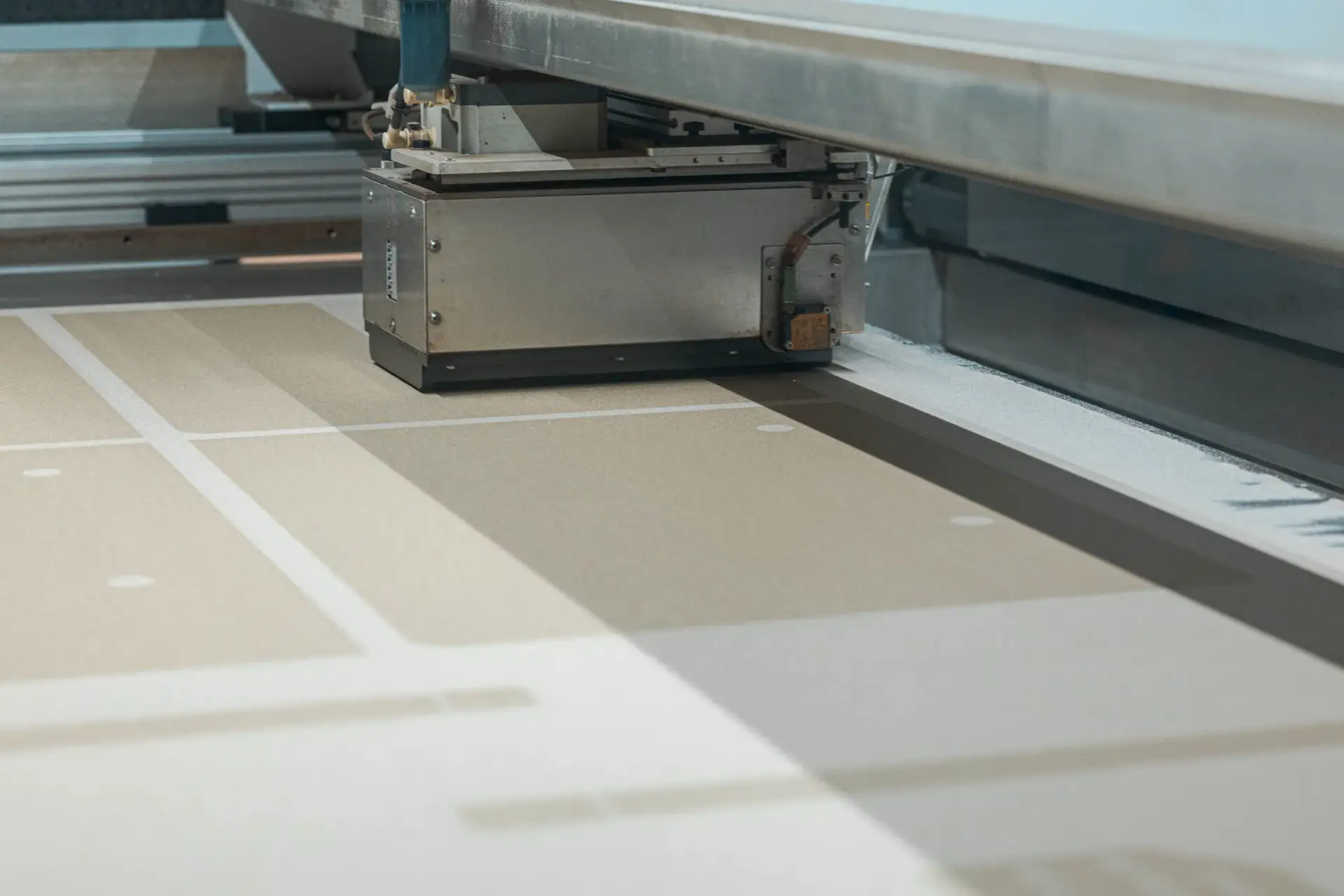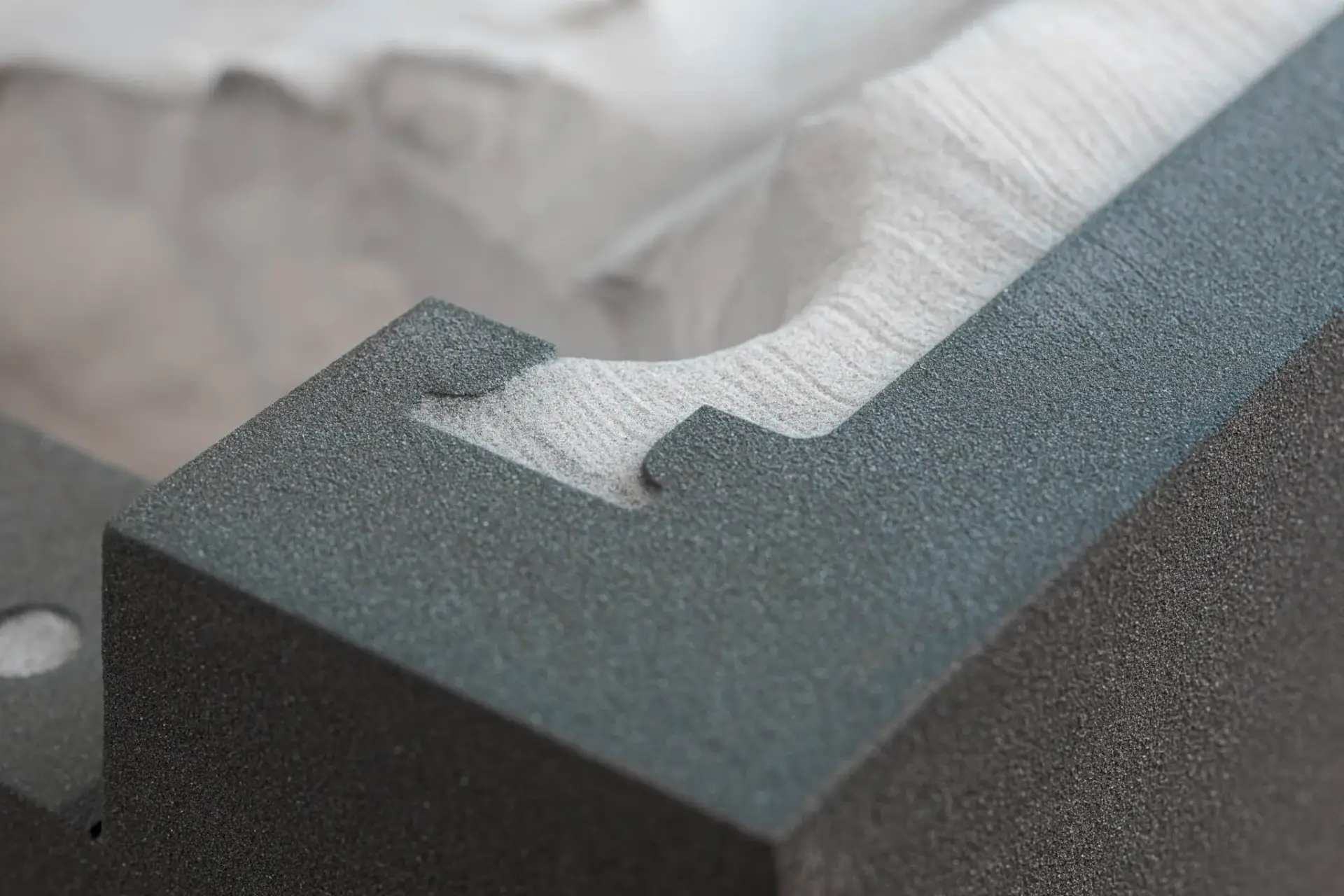
The traditional foundry process with a pattern virtually encourages overproduction. If a part is only profitable from a minimum quantity, then in case of doubt more will be produced than is actually needed. The rest goes into stock.
One-off parts are no problem with 3D sand printing. As no model is required, it makes no difference whether the quantity is one or ten. Cast parts can be obtained “on demand”.
The ability to order cast parts agilely “on demand” prevents stockpiling. It is no longer necessary to keep cast parts in stock as a precaution. The costly, space-consuming storage of wooden models is also a thing of the past thanks to 3D sand printing.
By completely eliminating the pattern-making phase, there is no longer any need to fetch a pattern from the warehouse and transport it to the foundry for mold production.
As castings can now be cast on demand, the reshoring of casting production suddenly pays off and the flexibility of the sand pressure process makes it possible to cast castings close to their place of use.
The 3D sand printer reduces the number of mold components required, which means that fewer components need to be assembled and far fewer sub-processes need to be brought together. To ensure that the timing is right and the mold can be assembled promptly for casting, different cores often have to be produced simultaneously for the mold halves. This suddenly keeps three to four employees busy at once.
3D sand-printed moulds are characterized by high precision, which requires fewer machining allowances. There is also no need for bevels to shape the model (as there is no model) and there is no offset between mold halves, which also reduces rework.
As the “model” only exists virtually, it is also capable of learning and can be refined from shape to shape. This means that problems can be rectified immediately and do not have to be compensated for by reworking (or even end up with a scrapped wooden model and a repeat of the model construction phase)
3D sand printing enables a new level of digitalization in the foundry process. Quotations can be calculated more quickly, work can be planned better, orders can be processed more efficiently and timed by the foundry. Waiting times disappear.
This also applies when you zoom out of the foundry and get a bird’s eye view of the casting procurement. With 3D sand printing, the mold can be printed and cast where there is capacity, not just where the old wooden model is in the warehouse.
For small series, one-off and repeat parts, mold production using wooden models is no longer up to date. It is simply the wrong process and is perfectly (and better) replaced by 3D sand printing. 3D sand printing also changes a lot in the sub-processes.

Sand can be cleaned and reused.
More sustainable casting production shines through in all the points listed above. Avoidable storage and transportation (of castings and models) cause emissions, model making devours resources and creates incentives for overproduction.
For every cast part that can be cast perfectly and without much reworking, so to speak, only one melting energy is required and not too much material is melted.
In addition, the well-known design freedoms of additive manufacturing also open up new possibilities for 3D sand printing. For example, weight reduction through bionic structures. This has countless consequences for the overall footprint of the cast part, even long after it has left the foundry.
The waste killer 3D sand printing makes it possible.
© 2025 All Rights Reserved.